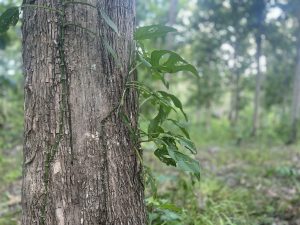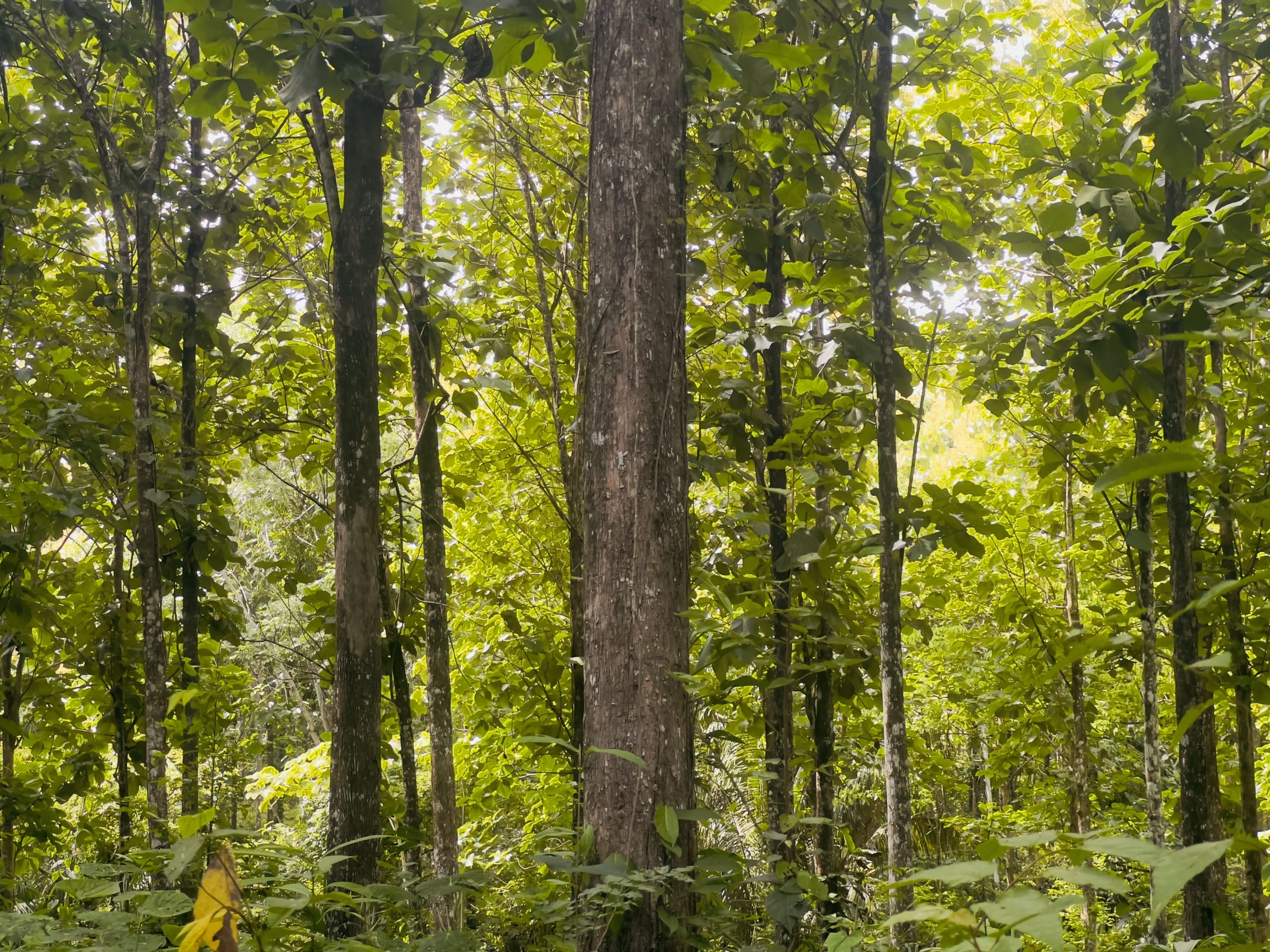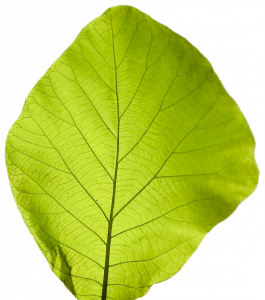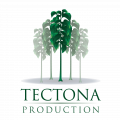Environmental Monitoring Indicators
I. Regeneration activities
The Tectona Production, Inc. projects have not yet experienced significant utilization. According to the Management Plans of the farms, the forestry exploitation, which is to say, the final harvest will be in an interval of 20 to 30 years and until the moment none of the farms has reached the final cutting cycle. However, the thinning conducted in 2023 had a silvicultural and commercial approach with an intensity of 15% for the canopy opening.
The thinning was marked with a uniform distribution to allow the remaining forest mass to occupy those spaces. As a result, where the extractive operations were carried out, the canopy tends to close quickly, which favors the recuperation of the undergrowth in a natural way. This regeneration includes native creeping species such as Philodendron spp., Nahuala (Cardulovica palmata), platanilla or chichica, bijao, etc.
In all of the projects, artificial regeneration actions (plantations) of native timber species have been implemented in areas such as roadsides, proximities to bodies of water such as streams, farm boundaries, and sites where the plantation of Tectona grandis does not figure out as the appropriate species for establishment.
These native timber species are managed under two different objectives: in the native species zone, for commercial exploitation purposes, and to create conditions that favor the formation of healthy and diverse gallery forests for fauna, which also serves as a source of food and shelter. Among the native species planted are Hawthorn cedar (Bombacopsis quinata), guágara palms, oak trees (Tabebuia rosea), mountain almond tree (Dipterix panamensis), cocobolo (Dalbergia retusa), cedar (Cedrela odorata), coconut (Dialium guianense) and, espavé (Anacardium excelsum), among others
II. Regeneration adaptation
The selected species for regeneration in all of the projects exhibit a coherent ecological adaptation with the site conditions. These are native species of the area, which confers a major advantage of adaptability to the environmental environment of the Darien province.

III. Use of Genetically Modified Organisms
None of Tectona Production, Inc.’s projects use genetically modified organisms (GMOs) in forest management units or adjacent areas.
IV. Impact of forestry activities
In all of the projects, appropriate forestry treatments are applied from an ecological perspective to the vegetation at each site, contributing significantly to the restoration of the forest cover.
This approach is integrated into a productive strategy based on the establishment and management of commercial forest plantations, thus meeting the objectives for management established.
Especially in our principle of producing environmental goods and services through silvicultural management in the plantations of our projects.

Our most common forestry practices include:
- Selective thinning: they are conducted with caution to eliminate the trees whose characteristics prevent the proposed growth scenarios from being achieved, allowing the optimal development of the plantation and adjacent vegetation; to allow the management objectives for each of the productive stages of the forest to be achieved.
- Reforestation with native species: the use of native species is prioritized in the regeneration and reforestation processes in protection zones, which has contributed to maintaining the biodiversity and preserving the genetical integrity of the local flora.
- Control and prevention against forest fires: when implementing strategies and practices designed to prevent, mitigate, and control forest fires through monitoring, training, and short fire rounds. These measures are essential to preserve the health of our forest ecosystems and have minimized the negative impacts on biodiversity, air quality, and water resources.
- Preservation of key habitats: critical areas are identified, registered, and protected, as riparian zones or habitats of species near the reserves, for maintaining the ecosystem’s functionality. In the Annex, we show the mapping of these areas.
- Planned harvesting practices: we have established harvesting periods considering the natural cycles of our planted species for commercial purposes, avoiding overexploitation and allowing the recovery of the vegetation.
- Environmental monitoring: we have implemented continuous monitoring systems for evaluating the long-term effects of the forestry practices in the environment, adjusting approaches as needed.
- Soil conservation: we apply techniques for minimizing soil erosion, preserving the soil’s structure and the amount of nutrients, and maintaining the water’s quality.
V. Adverse impacts of fertilizations
In certain projects, specifically in Guayacán, Relojera, La Esperanza, and Filo del Tallo, fertilization was conducted through the application of a fertilizer with a 15-15-15 (NPK) composition, following the recommendations of Eng. Ignacio Pimentel of Agropecuaria Quikiriki, in Tortí, based on the results of soil analysis.
The application was done at a rate of 4 ounces per plant, with the usage of appropriate protective equipment by field personnel, including gloves and masks.
The fertilization in our projects was done exclusively during the establishment of the plantation.

The establishment of our projects was carried out as early as August (mostly) and no later than October (2009), the reason why fertilization was carried out to ensure a minimum height of 50 cm for the plants in the field at the beginning of the dry season.
Later the trees became mature enough to develop on their own.
